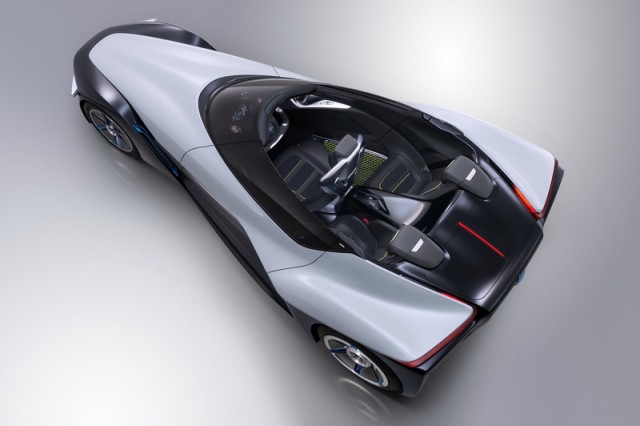Taking on a similar guise to the recently-announced ZEOD-RC electric racer that Nissan is entering in the 2014 24-hour Le Mans race, the BladeGlider is a concept that hints at a possible future direction that the Japanese company may take with its EVs. The open-topped concept suggests how a road-going version of the electric racer could look, but Nissan has also worded a statement that suggests that this could be more than just a fanciful concept car.
Exterior
Using the same basic shape as the original DeltaWing and subsequent ZEOD-RC race cars, the BladeGlider but is now open-topped and draped in sleek bodywork designed to minimise aerodynamic drag. The very narrow front end is comprised of two 100/80 R17-shod wheels that help to give the BladeGlider such an unconventional appearance.
The windscreen swoops back from the central driving position to meet with the rear bodywork over the wheels. Another unusual design detail is the rear of the car, which is almost cut off, making the rear wheels essentially the most rearward part of the car. Virtually no rear overhang exists, hinting at the car's 30/70 weight distribution. And if the BladeGlider's appearance wasn't spectacular enough, Nissan has fitted it with electrically-operated dihedral flip-up doors.
Interior
Like the exterior, the BladeGlider's interior also breaks with the norm. The central driving position along with a passenger seat located behind each of the driver's sides isn't an entirely new concept (it featured on the McLaren F1 road car), although the seating arrangements are a little more extreme in the Nissan.
The car's steering wheel (if you could call it a wheel) looks to be lifted straight from an airplane while the car's infotainment system incorporates a detailed satellite navigation system that includes topography of the surrounding landscape, as well as weather information to further enhance the car's potential range.
Mechanicals
Drawing on Nissan's knowledge with electric vehicles, the BladeGlider utilises lithium-ion battery packs that as mounted low in the car and right towards to the rear to further improve the car's stability and handling. Nissan says that "when BladeGlider matures into a production car" it could make use of in-wheel motors, a feature that would free up even more space inside.
Anything else?
When viewed from above, the BladeGlider may look more than a little awkward to get in and out of but, cleverly, the driver's seat slides across to meet the open door, reducing the need to climb across the cabin to reach it.

